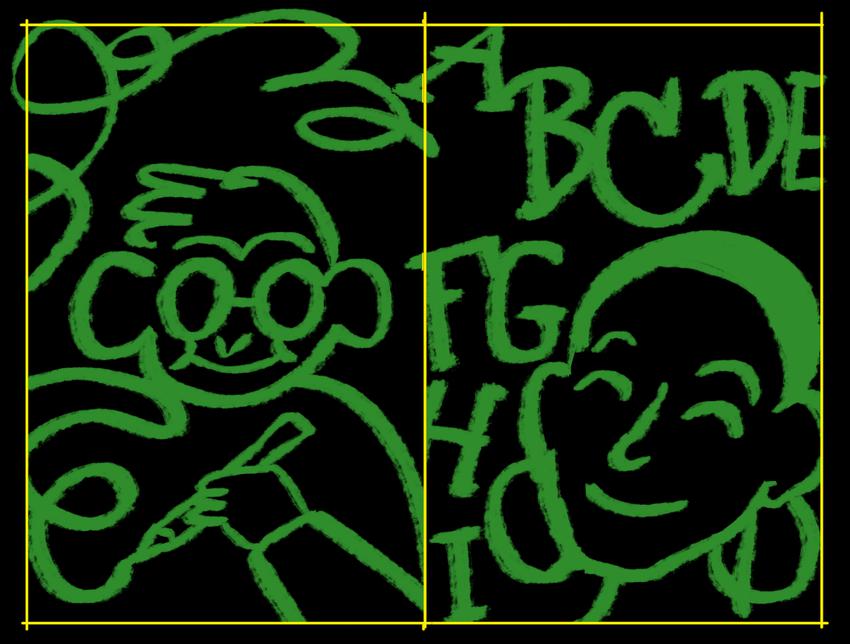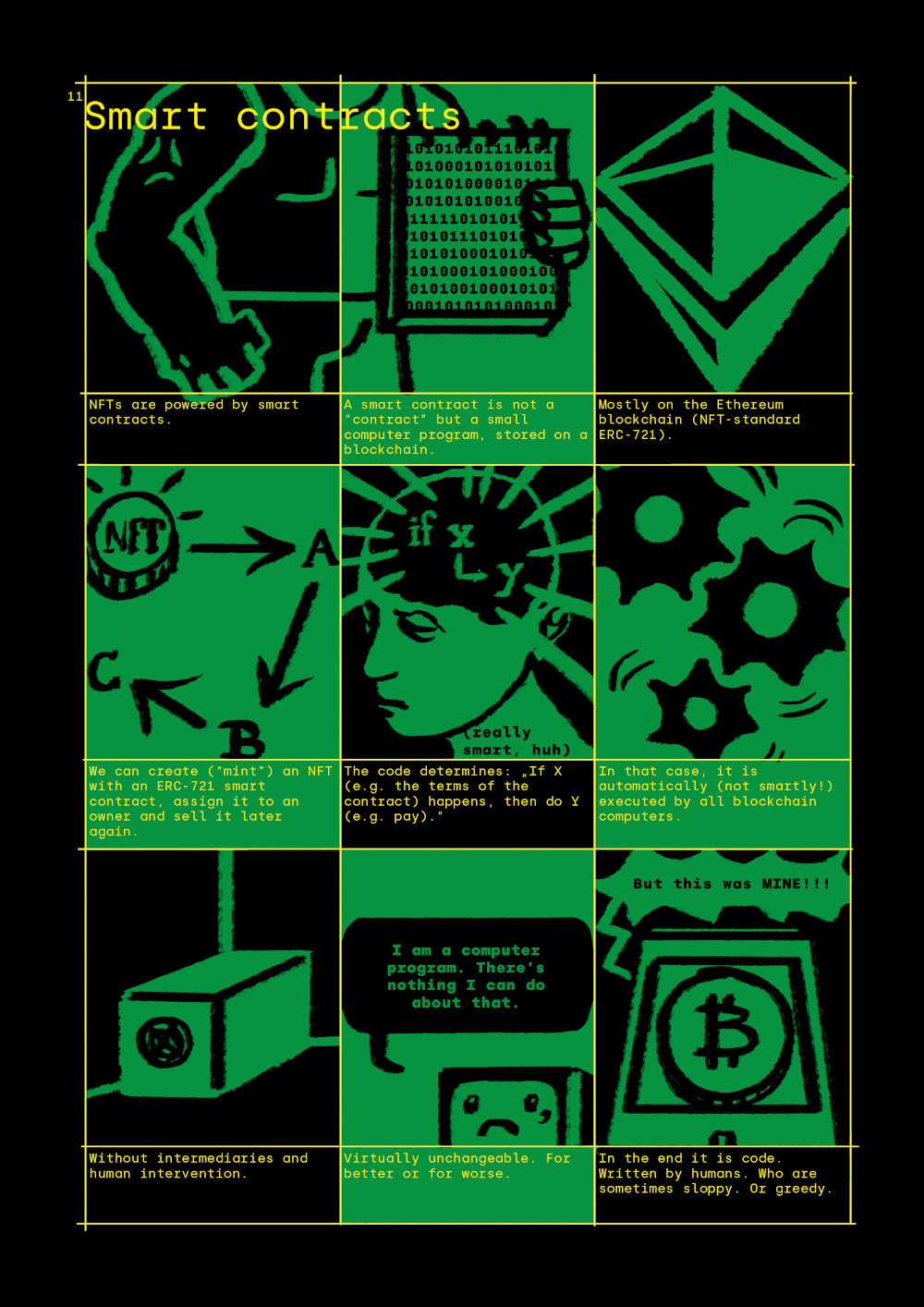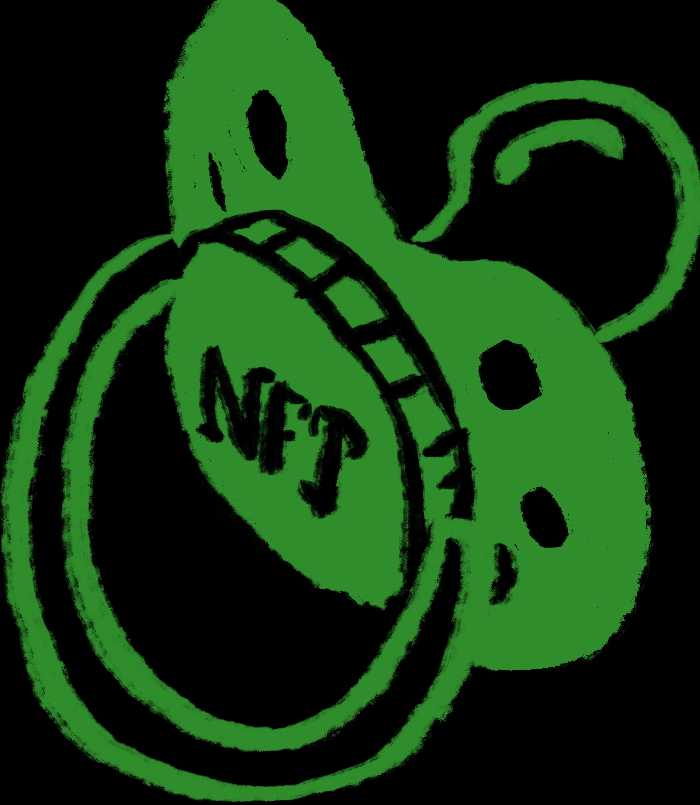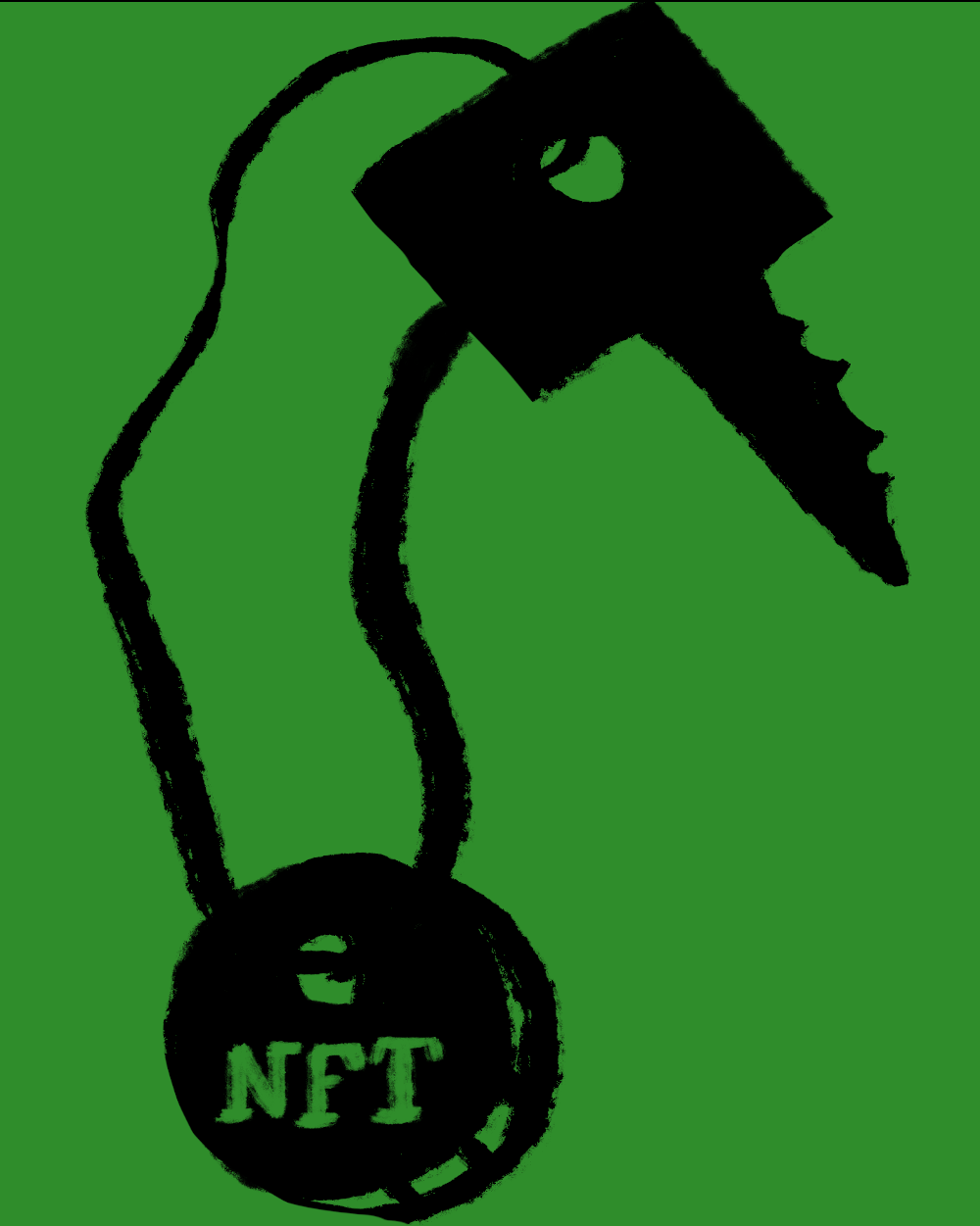Digitalisation & AI, Networking, Financing
Nicola Bünsch: "More needs to be done across the board"
How are job profiles in the cultural and creative industries …

Julia Schneider, comic essayist, and Noëlle Kröger, artist, are dedicating a comic to the hot topic of NFTs at this year's re:publica. We talked to them about it in the run-up to the publication and have already been able to catch a glimpse of the comic. NFT - what is that actually? And what does it have in store for artists?
CCB Magazine:Hi Julia, Hi Noëlle, in your book, Non-Fungible Comic, which you will be presenting at re:publica, you address the topic of NFTs. Very briefly for dummies, what are NFTs?
Noëlle Kröger:A digital artifact is in principle infinitely multipliable. This is problematic for artists, because their work loses value as a result. An analog image, on the other hand, is in itself unique and not so easily copied. The idea behind NFTs is to ensure the security and uniqueness of a digital artwork by making it, as the name Non-Fungible Token suggests, non-multipliable and assignable to a specific owner. Thus, NFTs are a kind of certificate that uniquely identifies the creators of digital artifacts and their buyers or collectors. Technically, NFTs cannot be thought of without cryptocurrencies. They are traded over a blockchain, often the Ethereum blockchain.
CCB Magazine:NFTs, along with the now thousands of cryptocurrencies, surround an aura of technological impenetrability. To participate in a blockchain, you need access software, a "wallet." What does that mean?
Julia Schneider:Very simple: You need a cryptocurrency in any case to be able to start with NFTs, the wallet is your digital wallet in this context. You can get the cryptos on special exchange platforms for money, mostly there are fees for the exchange. Your wallet, where your cryptos are located, are secured by a digital key that belongs only to you. Then there is a second key for trading NFTs on platforms such as Open Sea. The process, the transaction, takes place via so-called "smart contracts", a process that runs automatically, through a blockchain, as Noëlle has already mentioned. But the difficulty already starts with the creation, the so-called "mining" of an NFT. Once that is done and the trade is made through the blockchain, it can be transparently and unambiguously determined who is the creator and owner of an NFT.


CCB Magazine:American artist Beeple sold an NFT worth the equivalent of $69 million through the Christie's auction house in March 2021. But your comic makes it clear that only 1.8 percent of all NFTs sell for more than $800; indeed, one in three NFTs sells for only $100, which, all things considered, means a loss for the artists. Is the market with NFTs, like the conventional art market, only reserved for an elite upper class that profits from it?
Noëlle Kröger:Partly. Theoretically, everyone has the same chance to create NTFs and trade with them, so access is egalitarian, unlike the conventional art market. Theoretically, everyone has the same visibility. In practice, however, it is the case that better-known artists get more attention. After all, the attention doesn't just start online or through the trade of NFTs. The fame of an artist has many facets. So they have a better chance to be successful with NFTs. But there are now people who have become known through NFTs and had no chance on the conventional art market. These are often people who have already made a name for themselves with the help of Instagram, so there is a media correlation there. In other words, for some people NFTs open up a new possibility for monetizing art, but most of them don't earn anything from it or even make losses.
Julia Schneider:Another aspect is that the traditional art market is still not very interested in digital art. In any case, I see NFTs as an interesting playing field for artists, where they can try things out and a whole new art can emerge.
NFTs are a part of the imagined Web3, trying to be a counter-model to Web2, platform capitalism, where the value creation of content is siphoned off by a few. But it's still an experiment where you can't tell how it will turn out
CCB Magazine:Another disadvantage for NFT artists is that by not having an intermediary for their art, for example a gallery, they now also have to take on new tasks such as marketing, social media, website, managing rights, etc. Isn't that an imposition?
Julia Schneider:You're right. We are addressing this issue in our comic. Artists who want to sell their digital art in the form of NFTs need to know about cryptocurrencies, which are used for trading. They need to know how to create an NFT in the first place. They need a wallet, they need to speak English - and then you add the things you mentioned. So creating and trading NFTs is a very complex thing that takes time that is lost to creating your art.



CCB Magazine:The high plagiarism rate of NFTs is currently aggravating: you write that it's suspected that up to 80 percent of all NFTs are plagiarized or fake. A technical problem? A legal one?
Julia Schneider:The legal specialists are working on that right now. It's an open question how to clarify this legally. This also touches on the general question of how rights are defined in the digital economy. It's a question of what is worth what? And: How can we be the owner of something that we can't touch? The problem with NFTs, for example, is also that while their transaction runs securely over the blockchain, the digital artifacts themselves are stored in large server farms. The data thus remains in the control of large tech companies. And what actually happens to the data if such a server farm goes bust? What is happening right now is not clear from a legal and economic point of view. Politics and regulation are lagging behind developments.
Noëlle Kröger:An example of a fake NFT is a Banksy artwork that someone has sold as an NFT. Apart from the fact that we don't even know who is behind Banksy, the question of who is allowed to sell what as an original NFT must of course be clarified.
The problem with NFTs is that while their transaction runs on the blockchain, the digital artifacts are stored in large server farms. The data thus remains in the control of large tech companies. And what actually happens to the data if such a server farm goes bust?
CCB Magazine:NFTs are, one might say, an instrument or application of the Web3, which itself is not precisely defined, but which is based on the idea of creating a more decentralized, more egalitarian Internet in which all participating creators earn money. All content should be given a value. This is somewhat reminiscent of the euphoria of the early days of the Internet. In the end, isn't that a utopia?
Julia Schneider:This is precisely the framework of our comic. The discussion about who defines the Internet, with what goal, etc. NFTs are a part of the imagined Web3, through that they also try to be a counter-model to Web2, platform capitalism, where the value creation of the content is siphoned off by a few. But all this is still very abstract at the moment, an experiment where you can't tell how it's going to turn out.
CCB Magazine:A major criticism of NFTs, as well as cryptocurrencies in general, is their high energy consumption. In addition, cryptocurrencies like Ether or Bitcoin are extremely volatile. Right now, they're pretty much smacking down. A silly question: Why do you actually need a cryptocurrency to buy NFTs? You can also pay with normal money at Amazon, don't you?
Julia Schneider:Good question. In my opinion, NFTs could also work with "normal" money, such as euros or dollars.
Noëlle Kröger:There are attempts to build more stable cryptocurrencies. If I remember correctly, a cryptocurrency also pegged itself to the dollar exchange rate. One thing could be that it's a cultural or ideological thing, crypto fans believe that their model will catch on globally as a decentralized financial system without authority. They may not want to trade NFTs any other way.
The high energy consumption of blockchains is a difficult problem to solve. That there will be a solution to this presents itself as an often invoked but unfounded narrative on the part of proponents. That cryptos and NFTs will be green in the near future is a kind of incantation
CCB Magazine:In your comic, you explain in detail the technological and economic basis of NFTs, weighing up the pros and cons. What conclusion did you come to?
Noëlle Kröger:I think we are both convinced that NFTs will not disappear anytime soon. But I personally think that the disadvantages still outweigh the benefits. The promise of NFTs to give artists more freedom and better monetary compensation is not being fulfilled. I see it more as another economic speculation bubble.
Julia Schneider:There is no simple yes or no. I see the environmental problem caused by the high energy consumption of blockchains as a difficult problem to solve. The fact that there will be a solution to this problem is, for me, an often invoked but unfounded narrative on the part of the proponents. That cryptos, NFTs, etc. will be green in the near future is a kind of incantation. Tomorrow, tomorrow, tomorrow... On the other hand, I think it's a great achievement that there can be an immediate exchange on the Internet. It allows cultural workers and artists to try things out in a variety of ways, which enriches us all culturally.
CCB Magazine:Last question: What do you actually earn with your comic?
Julia Schneider:Our comic will be published under an open cc license: on the project website nonfungiblecomic.org you can download, read and share it for free. This cc license aims to make our work and the topic of NFTs accessible to as many private individuals as possible, and at the same time to counter-finance the project - which we created without any upfront investment - if possible. As with my other comics, there are various ways to do this: through invitations to lectures, exhibitions, further processing and the sale of print copies for lovers of printed comics. I'll also be talking about my (positive) experiences with this fairly new publishing model - self-publishing plus open licensing - at the .txt conference, the new format of re:publica, on June 11.
Do you know it? Our new magazine on sustainability and culture
You want to have the new CCB Magazine for free? [Click here]
Category: Knowledge & Analysis
Also a good read
Subscribe to our monthly newsletter!